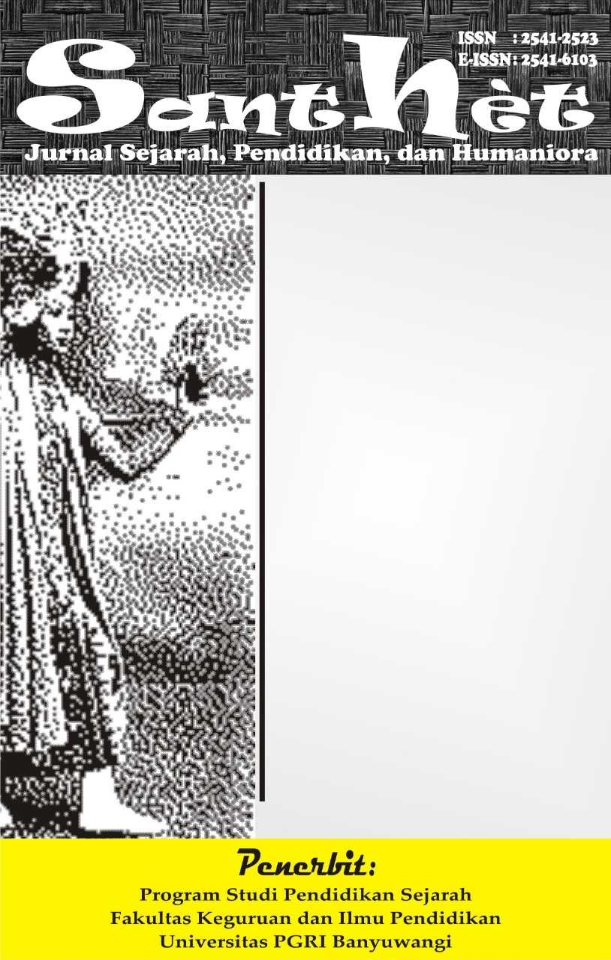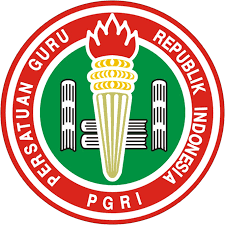Grindcore as a Medium of Social Critique: A Study of AK//47 in the Underground Music Scene in Semarang (1999–2016)
Grindcore sebagai Media Kritik Sosial: Studi tentang AK//47 dalam Skena Musik Underground di Semarang (1999–2016)
DOI:
https://doi.org/10.36526/santhet.v9i5.5808Keywords:
underground music, grindcore, social criticism, SemarangAbstract
This study aims to analyze the development of the underground music scene in Semarang during the period 1999–2016, with a particular focus on the role of AK//47 in utilizing grindcore music as a medium for social criticism. This study uses a historical method that includes the stages of heuristics, source criticism, interpretation, and historiography. Data collection techniques include literature review, archival analysis, and in-depth interviews with relevant informants. The findings show that AK//47 not only played a significant role in the formation and development of the underground music scene in Semarang, but also positioned grindcore music as a medium for expressing dissatisfaction with social, political, and environmental issues. This study demonstrates that grindcore, with its inherent Do It Yourself (DIY) ethos, functions as a means of cultural resistance and grassroots advocacy. It is hoped that this research will enrich the historiography of local music in Indonesia, particularly regarding the dynamics of underground subcultures as spaces for social and political articulation.
References
Andrew, T. V., Sihombing, R. M., & Ahmad, H. A. (2017). Musik, Media,dan Karya: Perkembangan Infrastruktur Musik Bawah Tanah (Underground) di Bandung (1967-1997). Patanjala: Jurnal Penelitian Sejarah dan Budaya, 9(2), 293–308.
Duncombe, S. (1997). Notes from Underground: Zines and the Politics of Alternative Culture. Microcosm Publishing.
Guerra, P., & Quintela, P. (2020). Punk, fanzines and DIY cultures in a global world. Springer International Publishing.
Hill, D. T. (2000). Media, Culture, and Politics in Indonesia. Oxford University Press.
Iswandi. (2015). Refleksi Psikologi Musik dalam Perilaku Masyarakat Sehari-hari. Humanus, 14(2), 152–157. https://doi.org/10.24036/JH.V14I2.5681
Kruse, H. (2010). Local Identity and Independent Music Scenes, Online and Off. Popular Music and Society, 33(5), 625–639. https://doi.org/10.1080/03007760903302145
Lukisworo, A. A., & Sutopo, O. R. (2017). Metal DIY: Dominasi, strategi, dan resistensi. Jurnal Studi Pemuda, 6(2), 579–589. https://doi.org/10.22146/studipemuda.2017.579589
Riches, G. (2016). Use your mind?: Embodiments of protest, transgression, and grotesque realism in British Grindcore. Dalam Global Metal Music and Culture (hlm. 125–142). Routledge.
Rohmah, K. N., Fahrizi, D. A., Alvizar, R., & Nugroho, J. M. (2023). Musik Hardcore Sebagai Media Kritik Terhadap Pemerintah. Jurnal Sains Student Research, 1(2), 754–761. https://doi.org/10.61722/jssr.v1i2.285
Shanmugaboopathi, P. S., & Catoto, J. S. (2022). Evaluation of the Influence of Music on Modern Culture and Society. TTASSH, 2(4), 19–26. https://doi.org/10.36647/TTASSH/02.04.A004
Umam, K., & Manurung, G. T. H. (2020). Zine as a Media of Subculture and Literacy in Semarang. E3S Web of Conferences, 202. https://doi.org/10.1051/e3sconf/202020207040
Wallach, J. (2005). Underground Rock Music and Democratization in Indonesia. World Literature Today, 79, 16–20. https://doi.org/10.2307/40158922
Wasino, & Hartatik, E. S. (2020). Metode Penelitian Sejarah: dari Riset Hingga Penulisan. Magnum Pustaka Utama.





























